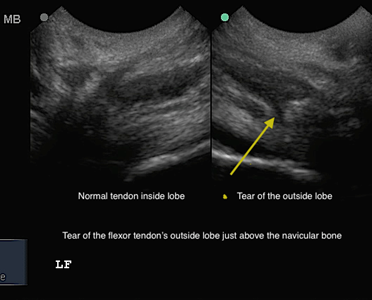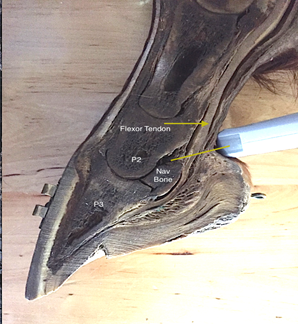Murietta Equine Blog
Case Report

2017-08-15
Reference:
Whiz is a nine year-old Quarter Horse gelding that competes in Reining.
History: 
Whiz was acutely lame in the left forelimb three months ago. The attending veterinarian diagnosed a possible sole abscess. After two weeks there was no improvement and no signs of an abscess. Radiographs of the left fore limb were normal. After two months, Whiz was exercised and the lameness returned.
Examination:
- Examination of the LF limb was unremarkable, the response to hoof testers, palpations and flexions were normal.
- The lameness is grade 2/5 in a trotted straight line and counterclockwise circle and grade 1/5 in the clockwise circle.
Anesthesia:
The lameness markedly improved after blocking the coffin joint.
Ultrasound Examination: 
There is a moderate tear of the deep digital flexor tendon’s lateral lobe, at the level of the navicular bone.
Take Home Messages:
- Approximately 50% of distal fore limb lameness have a primary or secondary soft tissue component.
- An ultrasound examination with full knowledge of the anatomy and biomechanics should precede an MRI.
- Most acute soft tissue injuries have the capacity to heal.
- When horses with undiagnosed soft tissue injuries continue to exercise, receive medications to “help” the pain, the lesion often becomes more extensive and the chance of recovery is less.


Comments